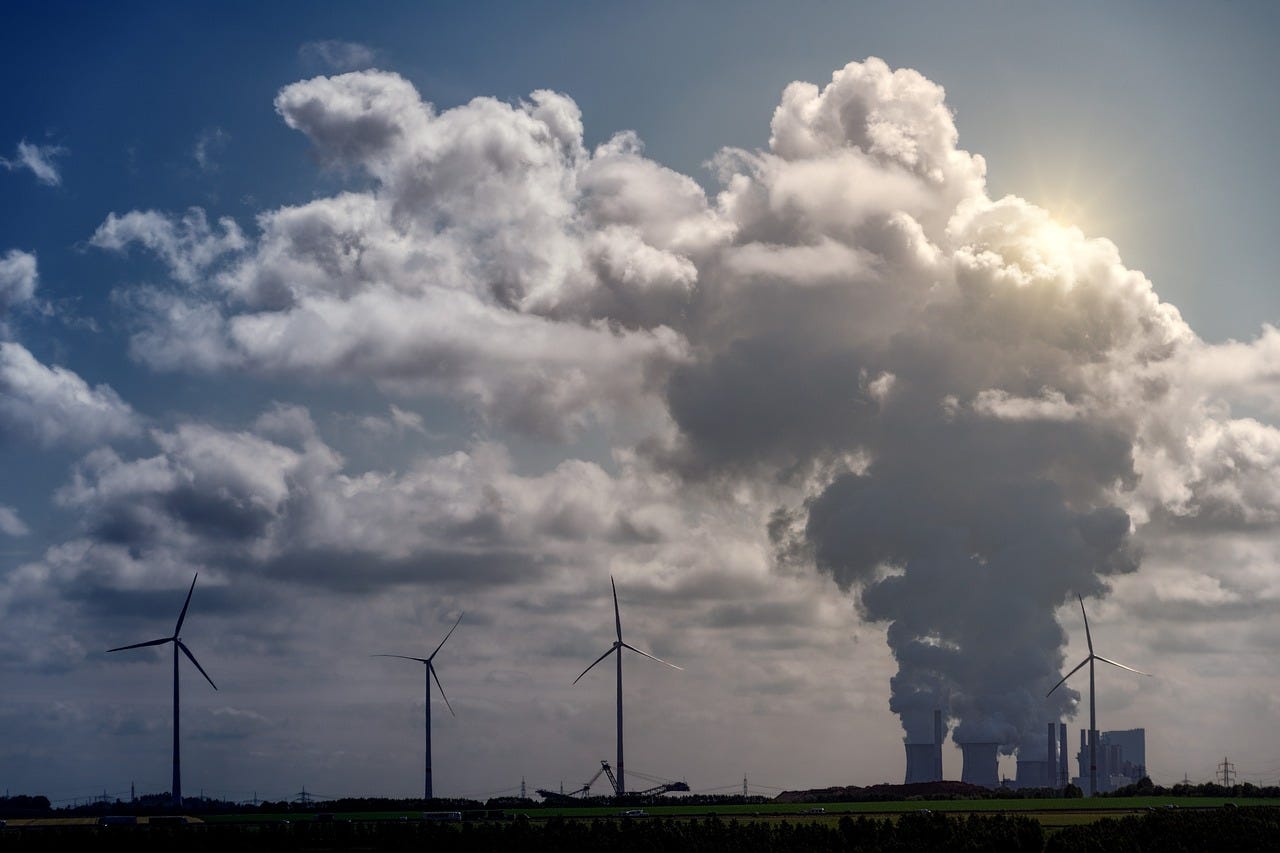With renewable subsidies on the block, nuclear has its day
Welcome to Callaway Climate Insights, your guide to the latest news and developments in climate finance and investing.
Today’s edition of Callaway Climate Insights is free for all our readers. We really want to bring you the best and latest in climate finance from around the world. Please subscribe now.

It has become increasingly clear in recent weeks that the one of the biggest early strategies of the incoming Donald Trump Administration will be to attack President Joe Biden’s Inflation Reduction Act and remove as much cost as possible to clear the way for tax cuts later in the year.
GOP leaders are arguing over the extent of the cuts, but most agree they will be largely focused on electric vehicle subsidies to start, as well as offshore wind. One area that is thriving, however, is nuclear research, especially for tech AI data centers.
Facebook parent Meta META 0.00%↑ this week became the latest tech giant to say it was going all in on nuclear energy to power new data centers, announcing a partnership with Entergy Corp. ETR 0.00%↑ to power a new center in Louisiana and explore other ways to develop nuclear power.
Meta joins Microsoft MSFT 0.00%↑ , which has done a deal with Constellation Energy CEG 0.00%↑ to re-open one of the nuclear reactors at the infamous Three Mile Island plant in Pennsylvania; as well as Google GOOGL 0.00%↑ and Amazon AMZN 0.00%↑ , which are investing in the new idea of small modular reactors to power their plants.
And then there is the Holy Grail of nuclear energy, fusion, the process of fusing two atomic nuclei vs the traditional fission process of splitting one in two. Fusion, which is what happens on the sun, promises infinite energy if it can be achieved at scale, and has prompted a global race among nuclear scientists to achieve it in the past few years.
The Bulletin for Atomic Scientists published a story this week, which is free for the time being, that said up to 45 different private companies around the world, with some $7.1 billion in collective financing, are currently working on some way to achieve fusion at scale.
For an excellent scientific overview, and I say that shamelessly because I am on the governing board of the Bulletin, check out this story by Robert J. Goldston, former director of the U.S. Energy Dept.’s Princeton Plasma Physics Lab. See: https://thebulletin.org/premium/2024-11/an-overview-of-the-fusion-landscape/
For climate investors, the fusion race is somewhat like the carbon storage and removal race happening at the other end of the energy spectrum. It signals that while the focus may shift on different types of clean energy somewhat because of politics, the science, funding, and hype behind these new technologies continues unabated.
Don’t forget to contact me directly if you have suggestions or ideas at dcallaway@callawayclimateinsights.com.
Follow us . . . .
Twitter | LinkedIn | Facebook | Instagram
The huge social cost of corporate America’s carbon footprint
. . . . Corporate America has racked up $87 trillion in carbon costs through its greenhouse gas emissions, enough to bankrupt three out of four companies if they were forced to account for those costs, writes Mark Hulbert, citing a new study on corporate America’s carbon burden. While oil and gas companies are the biggest offenders, it’s the 23% of companies whose market values exceed their emissions costs that are interesting. But even more fascinating, Hulbert argues, is which segment will be responsible for the most reductions in emissions, and what that means for investors.
Thursday’s subscriber insights
Morgan Stanley survey shows value in renewables despite Trump
. . . . A new survey out this week from Morgan Stanley goes against the popular notion that renewable energy stocks are doomed under President-elect Donald Trump’s upcoming term. The survey, first reported by ESG Today, found about 80% of some 900 institutional investors expect to see gains in sustainable assets in the next two years, both from new money coming in from investors and in general appreciation.
The authors of the report attribute the prediction to what they called a “maturing” of the environmental, social and governance category. We’re not sure what this means, especially as so many Wall Street pundits have already written the obituary for ESG investing and anti-ESG politicians continue to attack the strategy.
But investors do respond to performance, and what makes this report interesting to us is that it seems to forecast improved performance in renewable energy and clean tech stocks in the next two years before midterm elections. Part of this might be because the sector has performed so badly over the past few years. It’s in line for a rebound at some point and two years seems a safe forecast.
But mostly, to us, it highlights the theme that energy security is going to become a big deal under a new Trump Administration, and that solar, wind, battery, carbon removal and storage, carbon offsets, and electric grid modernization are all going to become parts of that theme.
After all, how wrong could 900 professional investors be?
Battery transition news picks up as Biden term nears end
. . . . One of the fastest growth areas in renewable energy is also one of its most unsung, electric battery development and storage. This week offered some clues for investors about the pace of growth as President Joe Biden’s term comes to an end.
Duke Energy DUK 0.00%↑, one of the largest energy holding companies in the U.S., said this week it will scrap the last remains of a North Carolina coal plant this month and develop a battery storage plant next year in its place. The announcement is a striking example of how the economics of renewable energy outweigh the politics, even in a state such as North Carolina.
At the same time, the Biden Administration, following its $6.6 billion loan to EV maker Rivian RIVN 0.00%↑ last week, said this week the Energy Department will loan $7.5 billion to a joint venture between Stellantis STLA 0.00%↑ and Samsung to build two new EV battery plants in Indiana. The loans are on top of more than $100 billion in grants the outgoing president’s team has made to renewable energy projects under the Inflation Reduction Act of 2022, about 80% of its capacity.
Earlier this week, we mentioned an item about Redwood Materials, the EV battery recycler in Nevada, hitting $200 million in revenue this year. Battery storage and development will be a key driver of renewable capacity in coming years, and the more that it’s done within U.S. borders, the less threatened it will be by reckless tariffs and international trade spats.
Renewable investors dreading the coming of a new Trump administration would be wise to look past the headlines to see some of the deals that are clearly being done with the near-term future in mind. . . .
Editor’s picks: Cashmere and climate change; plus, managing minerals and metals
Watch the video: 90% of the world’s cashmere, the wonderfully soft fiber used in scarves and sweaters, comes from China and Mongolia. Cashmere goats are raised by nomadic pastoralists on marginal habitat in the Gobi Desert. These herders are fighting the effects of the climate crisis... with a little help from NASA. What’s on your holiday gift list?
New pact to better manage minerals and metals
The UN Environment Programme and the Intergovernmental Forum on Mining, Minerals, Metals and Sustainable Development are collaborating to strengthen the environmental sustainability of minerals and metals management. The goal of the groups’ new agreement is to bring mining, minerals and metals closer to the 2030 Agenda for Sustainable Development and relevant multilateral environmental agreements, including through sustainable consumption and production, and enhanced sustainability practices. Plans include training and workshops on enhancing environmental sustainability of minerals and metals management, management of artisanal and small-scale mining, and creating a digital knowledge hub.
Latest findings: New research, studies and projects
Microplastics, ocean warming threaten key part of ecosystem
Microplastics (MP) and ocean warming pose a significant threat to marine phytoplankton. This study titled The Combined Effects of Ocean Warming and Microplastic Pollution on Marine Phytoplankton Community Dynamics, evaluated the effects of projected MP pollution and rising temperatures on phytoplankton biomass, abundance, and diversity. While MPs alone did not impact these factors at current temperatures, warming conditions led to a 41% reduction in biomass and a 38.8% decline in diversity in MP-exposed samples. These findings suggest that MP toxicity, aggregation, and reduced light penetration, exacerbated by warming, inhibit phytoplankton growth. This study underscores the need for further research to mitigate the combined impacts of MPs and warming on marine ecosystems, given the potential ecological and socioeconomic consequences. Authors: Abigail Cousins, Bangor University; Nathalie Fenner, Bangor University; Dan Aberg, Bangor University; Christian Dunn, Bangor University.
More of the latest research:
Expecting Climate Change: A Nationwide Field Experiment in the Housing Market (NBER working paper)
Disaster Risk, Inequality, and Fiscal Sustainability (Asian Development Bank working paper)
Words to live by . . . .
“We have forgotten how to be good guests, how to walk lightly on the earth as its other creatures do.” — Barbara Ward, British economist and writer.






Lots of people feel that way. I certainly understand. What these companies are doing now is going to generate more waste. Very dangerous.
Let us not wax positive about nuclear. I am currently reading Atomic Days, by Joshua Frank, about Hanford and the disposal of nuclear waste. My husband's older brother worked for Bechtel all his life, on the sites of plant building all over the world (from China to Kazakstan). Now he wasn't working construction from 1980 on, but he reviewed contracts on site, and spent the last 10 years at Hanford, plus several years in the Seventies at Hanford. He now has leukemia and some other blood issues which the doctors cannot diagnose. After you read this book, you may have some serious questions about the disposal of nuclear waste. When the issue of nuclear waste disposal is resolved, I'll consider the peaceful use of nuclear power, but until then, NO, NO, NO!!!!!!!